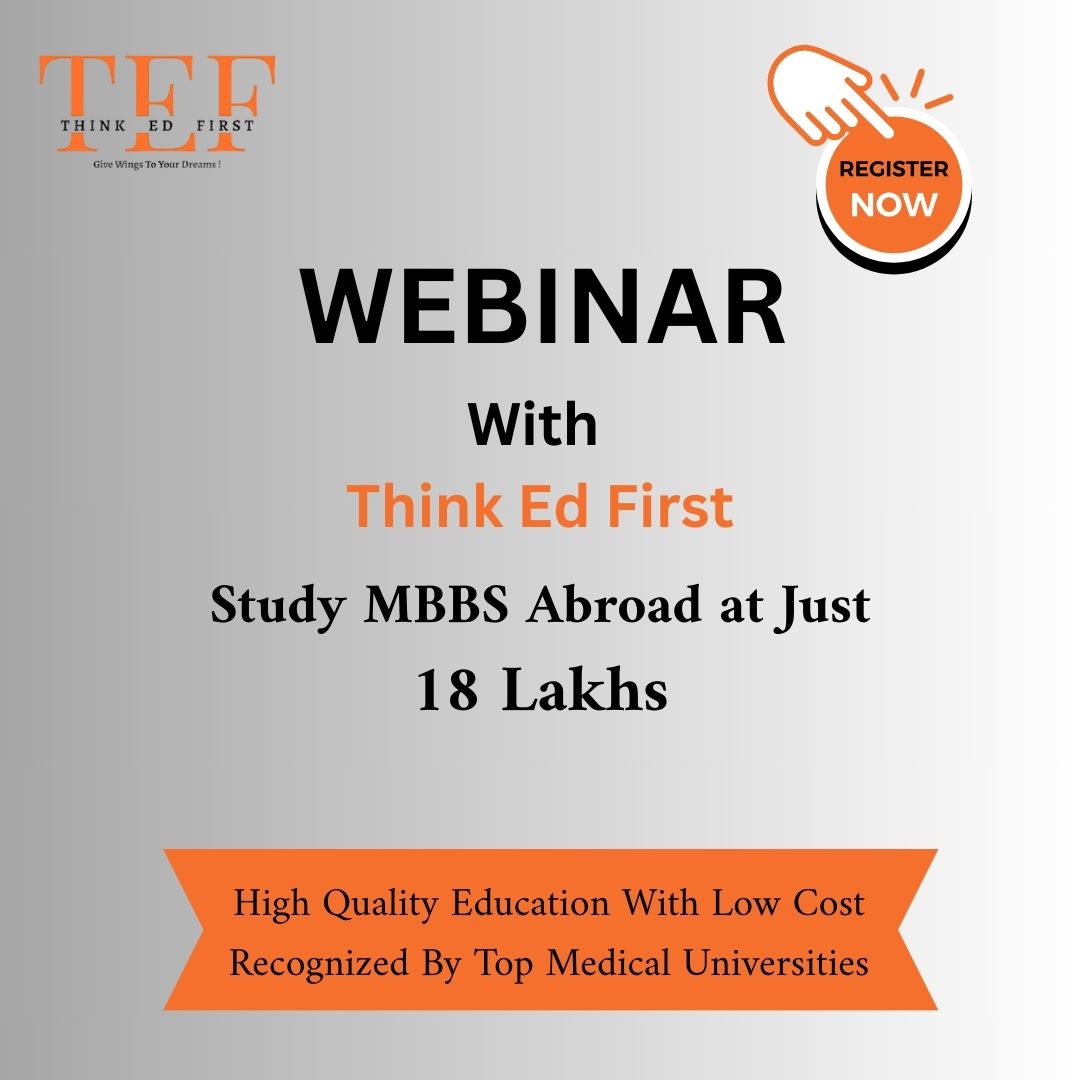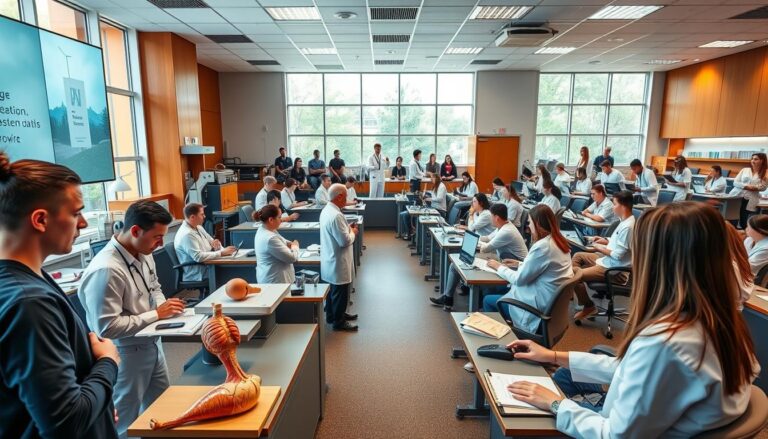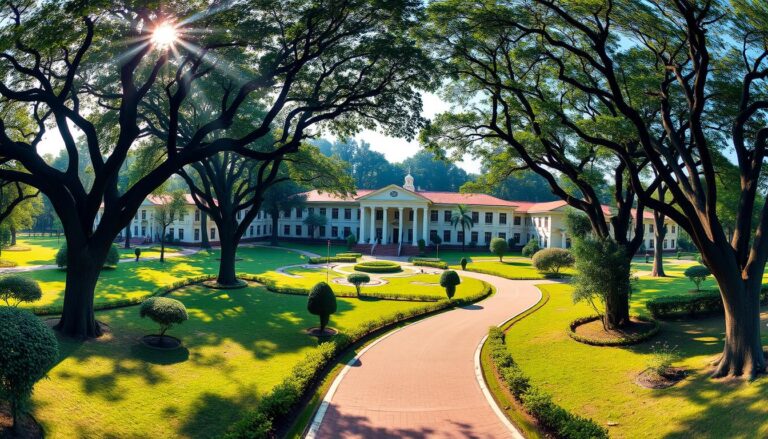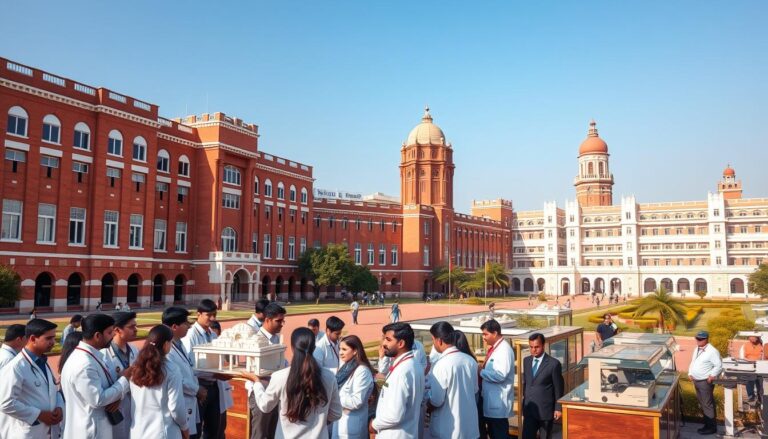Have you ever wondered why some students pay a fraction of the cost for the same medical degree that others spend lakhs on? The answer lies in the choice between government and private institutions.
NEET UG is the sole entrance exam for securing a seat in medical colleges across the country. While government medical colleges offer affordable education, private institutions come with a hefty price tag. The difference in fees can be staggering, with government options costing as little as ₹6,000 annually, compared to private colleges charging up to ₹25 lakhs.
This article dives into the key differences between these two paths. We’ll explore the costs, opportunities, and factors you need to consider before making this life-changing decision. Whether you’re aiming for a government seat or considering private options, understanding the financial landscape is crucial.
Understanding MBBS College Fees in India
The cost of pursuing a medical degree can vary dramatically depending on the institution. While some students pay minimal amounts, others face significantly higher expenses. This disparity is influenced by several factors, including the type of institution, its location, and the facilities it offers.
Why Fees Vary Between Institutions
Government institutions, such as AIIMS and JIPMER, charge less than ₹10,000 annually. In contrast, private institutions like CMC Vellore can cost up to ₹4 lakhs per year. Regulatory differences play a major role here. The National Medical Commission (NMC) controls 85% of government college fees, while private institutions have more autonomy.
Infrastructure also impacts costs. Institutions with advanced facilities, such as robotic surgery labs, often charge 40% higher fees. Location is another key factor. For example, institutions in Mumbai are 25% more expensive than those in tier-2 cities.
Key Factors Influencing Tuition Costs
The quota system is a significant factor. All India Quota (AIQ) seats make up 15% of admissions and have subsidized fees. State quotas account for 85%, and NRI-specific seats can cost between $25,000 and $220,000 annually. Hidden costs, such as bond requirements, also add to the financial burden.
Clinical exposure and alumni networks further justify higher fees. Institutions with hospitals housing 2,000+ beds or those with 94% placement rates, like CMC Vellore, often charge more. Recent changes, such as the 2023 NMC fee caps, have also influenced private institution pricing.
| Institution | Annual Fee (₹) |
|---|---|
| AIIMS Delhi | 2,027 |
| JIPMER Puducherry | 10,000 |
| CMC Vellore | 4,00,000 |
| Amrita Vishwa Vidyapeetham | 18,68,000 |
Government Medical Colleges: Affordable Excellence
Government institutions offer a unique blend of quality and affordability. These colleges are known for their subsidized education, making them accessible to students from diverse backgrounds. With state funding covering up to 93% of actual costs, students can focus on their studies without financial stress.
Average Tuition Fees and Structure
The average tuition fee in government medical colleges ranges from ₹10,000 to ₹1,00,000 annually. Institutions like Maulana Azad Medical College in Delhi charge as low as ₹2,445 per year. This affordability is made possible through state funding and subsidies.
Additional costs, such as hostel fees and study materials, are also minimal. For example, hostel fees at Lady Hardinge Medical College are just ₹490 per month. Scholarships and fee waivers further reduce the financial burden for eligible students.
State-Wise Fee Breakdown for Government Colleges
Fees vary significantly across states. Maharashtra’s 21 government colleges charge between ₹85,800 and ₹1.05 lakh annually. In Tamil Nadu, fees range from ₹18,655 to ₹77,100 across 15 institutions. Kerala offers free education for SC/ST students, making it even more accessible.
Here’s a detailed breakdown of fees in select states:
| State | Annual Fee (₹) |
|---|---|
| Delhi (Maulana Azad Medical College) | 2,445 |
| Maharashtra (KEM Mumbai) | 1,04,000 |
| Andhra Pradesh | 10,000-20,000 |
| Kerala | 27,580 (Free for SC/ST) |
| Goa | 1,12,500 |
These fees are significantly lower compared to private institutions, making government colleges a preferred choice for many students.
Private Medical Colleges: Costs and Considerations
Private institutions often come with a higher price tag, but they also offer unique advantages. These institutions are known for their advanced facilities, diverse clinical exposure, and strong alumni networks. However, understanding the financial implications is crucial before making a decision.
Fee Range for Top Private Institutions
The cost of attending private institutions varies widely. For example, Manipal Academy of Higher Education charges ₹17.8 lakh annually, while Bharati Vidyapeeth demands ₹21.3 lakh. Top-tier institutions like SRM Chennai and DY Patil Pune can cost up to ₹25-26 lakh per year.
Payment structures also differ. In Karnataka, 60% of the fees are paid upfront. Hidden charges, such as a ₹2.5 lakh development fee in Tamil Nadu, can add to the total cost. Despite the expenses, many students find the investment worthwhile due to the quality of education and facilities.
Management and NRI Quota Costs
Management quota seats often come with a premium. In Telangana, these seats can cost 300% more than regular fees. NRI quota seats are even more expensive, with fees reaching $220,000 annually at institutions like Sri Ramachandra Medical College.
NRI students enjoy additional benefits, such as priority hostel allocation and opportunities for international rotations. Payment options like EMI facilities at 9% interest in Maharashtra provide financial flexibility for families.
| Institution | Annual Fee (₹) |
|---|---|
| Manipal Academy of Higher Education | 17,80,000 |
| Bharati Vidyapeeth | 21,30,000 |
| SRM Chennai | 25,00,000 |
| DY Patil Pune | 26,00,000 |
MBBS College Fees in India: Direct Comparison
When comparing educational paths, the financial differences between government and private institutions are striking. Over a 5-year program, government institutions cost between ₹1.8 lakhs and ₹9 lakhs, while private ones range from ₹13.5 lakhs to ₹1.38 crores. This gap highlights the need for careful financial planning.
- Cost-per-credit: Government institutions charge around ₹150 per credit, while private ones demand ₹4,500.
- ROI: Government students break even in 7 years, compared to 12 years for private students.
- Scholarships: Government institutions offer 45 schemes, while private ones provide only 12.
- Dropout rates: Financial stress leads to an 8% dropout rate in private institutions, versus 2% in government ones.
- Infrastructure: Private institutions invest 18% more in tech upgrades.
- Faculty ratios: Government institutions maintain a 1:7 student-teacher ratio, while private ones have 1:15.
For students preparing for the national eligibility cum entrance test, understanding these differences is crucial. Private colleges may offer advanced facilities, but the financial burden often leads to long-term challenges. Government institutions, on the other hand, provide a more affordable and stable path.
Ultimately, the choice depends on individual priorities and financial capabilities. Both paths have their merits, but a clear understanding of the costs and benefits is essential for making an informed decision.
Deemed Universities and Their Fee Structures
Deemed universities in India provide a unique blend of advanced education and global exposure, but their fee structures can be complex. These institutions are known for their state-of-the-art facilities, international collaborations, and diverse clinical opportunities. However, understanding the financial aspects is crucial for students and their families.
Management Quota Fees
Management quota seats often come with a premium. For example, institutions like SRM Chennai charge ₹22.5 lakh annually under this category. In Chennai colleges, a one-time payment of ₹75 lakh is common for management quota entry. Payment plans, such as 4-year installments at 5% interest in Karnataka, provide flexibility for families.
NRI Quota Fees in USD
NRI quota seats are significantly more expensive, with fees ranging from $25,000 at Siddhartha Medical College to $220,000 at Sri Ramachandra Medical College. These seats offer additional benefits, including dedicated language support services and priority hostel allocation. Overseas clinical rotations, costing an extra ₹3 lakh, further enhance the learning experience.
Top deemed institutes like Kasturba Medical College in Mangalore and JSS Medical College in Mysore charge ₹17.8 lakh and ₹18.5 lakh annually, respectively. With 65% of these institutions having partnerships with US and UK universities, students gain access to global opportunities. However, careful financial planning is essential to manage these costs effectively.
All India Quota Fees: What You Need to Know
Understanding the All India Quota system can help students make informed decisions about their medical education. This quota reserves 15% of seats in government institutions for students across the country. With 57 colleges participating, it provides a unique opportunity to study in top institutions at affordable rates.
The fee structure under the All India Quota varies significantly. For example, Maulana Azad Medical College in Delhi charges as low as ₹240 annually, while Goa Medical College costs ₹89,500. This range makes it a cost-effective option compared to private institutions.
- Fee Components: A refundable security deposit of ₹1.2 lakh is common across participating institutions.
- State Participation: In 2023, 19 out of 28 states contributed to the AIQ pool, offering diverse options for students.
- Cutoff Trends: The 2023 NEET cutoff for AIQ seats dropped to 585 marks, making it more accessible.
- Migration Certificates: These are required for students transferring between states.
- Fee Advantage: AIQ seats are 30% cheaper than state quota seats in states like Maharashtra.
- Reservation: A 10% EWS quota is available within the AIQ, ensuring inclusivity.
By choosing the All India Quota, students can access quality education without the financial burden often associated with private institutions. This system not only bridges geographical barriers but also promotes equal opportunities for aspiring medical professionals.
State Quota Fees: Regional Variations
State quota fees in India vary widely depending on regional policies and local regulations. For example, in Tamil Nadu, fees range from ₹18,655 to ₹1.37 lakh annually, while Uttar Pradesh charges between ₹1 lakh and ₹1.14 lakh. These variations reflect the diverse financial structures across states.
In the Northeast, students benefit from significant subsidies. Tripura offers an 80% fee reduction, making education more accessible. Domicile requirements also play a role. Karnataka, for instance, mandates proof of residence for at least 10 years to qualify for state quota seats.
Special categories add another layer of complexity. Punjab reserves 5% of seats for freedom fighters’ families, while Bihar allows quarterly installment payments for tuition. However, penalties for false domicile claims can be severe, with fines reaching ₹5 lakh in some states.
Inter-state variations are notable. Kerala’s fees are 40% lower than Telangana’s, highlighting the importance of regional comparisons. Below is a breakdown of state-wise fees for clarity:
| State | Annual Fee (₹) |
|---|---|
| Tamil Nadu | 18,655 – 1,37,000 |
| Uttar Pradesh | 1,00,000 – 1,14,000 |
| Kerala | 27,580 |
| Assam | 20,000 – 28,000 |
Understanding these regional differences is crucial for students planning their medical education. By considering state quota fees and local policies, they can make informed decisions that align with their financial capabilities.
Additional Costs Beyond Tuition
Beyond tuition, there are several expenses that students must consider when planning their medical education. These costs can vary depending on the institution and location, but they are essential to factor into your budget.

Hostel and Accommodation Fees
Living on campus is a common choice for students pursuing medicine. Hostel fees can range from ₹4,000 annually in Tripura to ₹2 lakhs in Mumbai. Government institutions typically charge between ₹10,000 and ₹30,000, while private ones may cost up to ₹1.5 lakhs.
Additional charges like mess fees and maintenance costs can add up. For example, mess charges often average ₹24,000 per year, while maintenance fees can be around ₹10,000 annually.
Books, Supplies, and Miscellaneous Expenses
Books and study materials are another significant expense. An initial investment of ₹50,000 is common for textbooks and reference materials. Lab supplies, such as dissection kits and lab coats, can cost around ₹15,000 and ₹8,000, respectively.
Other miscellaneous costs include:
- Security deposits: ₹25,000 to ₹2 lakhs (refundable)
- Insurance: ₹2,000 annually for student accident coverage
- Transportation: ₹300 monthly for bus passes in campus towns
- Technology fees: ₹15,000 annually for digital library access
- Conference costs: ₹20,000 average for national symposiums
Understanding these additional expenses helps students plan their finances effectively and avoid unexpected financial stress.
MBBS Admission Process in India
Securing a seat in a medical program involves a structured process that begins with a national-level exam. This system ensures fairness and transparency, allowing students from diverse backgrounds to compete on equal footing.
NEET Exam and Eligibility
The NEET exam is the gateway to medical education in India. In 2023, over 20 lakh applicants competed for 1.1 lakh seats. To be eligible, students must score at least 50% in their qualifying exams, with relaxed criteria for reserved categories.
For 2024, significant changes have been introduced. The number of application centers has increased by 20%, making it more accessible for students across the country. This ensures a smoother experience for all candidates.
Counselling and Seat Allocation
After clearing the exam, students enter the counseling phase. This process consists of four rounds, with seat allocation based on merit and category-wise quotas. The timeline varies, with All India Quota counseling held in July-August and state counseling in September-October.
Key features of the counseling process include:
- Document verification through a 3-stage physical check.
- An option to freeze allocated seats by paying a ₹10,000 fee.
- Three rounds of preference reshuffling for upgradation.
- A 15% fee deduction for withdrawals before the third round.
Understanding these steps helps students navigate the process effectively and secure their desired seats.
Financial Aid and Scholarships for MBBS
Navigating the financial challenges of medical studies can be easier with the right support. Over 150 scholarships are available to help students manage costs. These opportunities range from central government schemes to institutional aid and corporate sponsorships.
The Medical Council of India (MCI) offers ₹60,000 annually to the top 100 NEET rank holders. This initiative encourages excellence and reduces financial stress for high achievers. Central schemes like PMSSS provide ₹5 lakh in coverage, while INSPIRE offers ₹80,000 per year to deserving candidates.
State programs also play a crucial role. For example, the Karnataka Education Authority (KEA) provides fee reimbursement for rural students. Institutions like CMC Vellore offer 100% need-based scholarships, ensuring that financial constraints don’t hinder academic progress.
Corporate sponsorships are another valuable resource. Apollo Hospitals, for instance, provides a 25% fee waiver for students who agree to a contract bond. Loan options are also available, with the State Bank of India (SBI) offering loans at 7.5% interest for medical students.
Tax benefits further ease the financial burden. Section 80E of the Income Tax Act allows a deduction of up to ₹2 lakh on education loans. These combined efforts make medical education more accessible and manageable for students across the country.
Top Government Medical Colleges and Their Fees
Choosing the right institution for medical studies can shape your future career. Among the top options, AIIMS and JIPMER stand out for their affordability and excellence. These institutions offer world-class education at minimal costs, making them highly sought after.
AIIMS and JIPMER Fee Structures
AIIMS is renowned for its low fees, charging just ₹1,628 annually. This includes a ₹600 registration fee and ₹328 for exams. Students also benefit from subsidized hostel accommodations, making it an economical choice.
JIPMER, on the other hand, offers free hostel stays, reducing additional expenses. With an annual fee of ₹5,000, it provides quality education at an affordable rate. Both institutions are known for their advanced facilities and strong alumni networks.
Central Universities Offering Medical Programs
Central universities like Banaras Hindu University (BHU) also provide excellent opportunities. BHU charges ₹14,874 annually, with hostel fees of ₹8,000. Other universities, such as Delhi University (DU) and Aligarh Muslim University (AMU), have unique fee structures.
- DU requires a ₹10 lakh bond for admission.
- AMU charges ₹39,990 for tuition and ₹75,000 for hostel facilities.
- Reservation policies ensure 49.5% of seats are reserved for various categories.
These institutions combine affordability with quality, making them ideal for students seeking value-driven education.
Leading Private Medical Colleges and Their Costs
Private medical institutions in India are known for their advanced facilities and global exposure. These institutions offer a blend of quality education, diverse clinical experiences, and strong alumni networks. However, the financial commitment required is significantly higher compared to government options.
Christian Medical College and Other Top Picks
Christian Medical College (CMC) Vellore stands out with its 128-year legacy and a 97% USMLE pass rate. The annual fee here is ₹40,000, making it a relatively affordable choice among private institutions. CMC is renowned for its research initiatives and patient-centric approach.
Manipal Academy of Higher Education is another top contender. With an annual fee of ₹17.8 lakh, it offers WHO-recognized programs and 22 international partnerships. Students here gain access to cutting-edge technology and global opportunities.
Other notable institutions include:
- Bharati Vidyapeeth, Pune: ₹21.3 lakh annual fee with VR surgical training.
- Yenepoya, Mangalore: ₹22 lakh annual fee plus ₹1.16 lakh hostel charges.
- St. John’s Medical College, Bangalore: ₹5.56 lakh annual fee with a strong Catholic mission focus.
Financial support is also available. HDFC offers 0% EMI options for students admitted to the top 20 private medical colleges. This helps ease the burden of high tuition costs.
5-Year Cost Analysis: Government vs Private
Planning your medical education requires a clear understanding of long-term costs. Over five years, government institutions typically range from ₹1.8 lakhs to ₹9 lakhs, while private ones can cost between ₹13.5 lakhs and ₹1.38 crores. This significant difference highlights the need for careful financial planning.
A year-wise breakdown shows that 40% of the total fees are often paid in the first year. Inflation also plays a role, with private institutions increasing fees by 7% annually. To manage these expenses, students can adopt cost-saving strategies like book banks and shared housing.
Dropout penalties are another factor to consider. Withdrawing from a program can result in a ₹3 lakh penalty and lost academic years. However, internships offer some financial relief, with stipends ranging from ₹18k to ₹25k per month.
- ROI Comparison: Government students break even in 11 years, while private students take 18 years.
- Loan Trends: 73% of students prefer loans to cover their education costs.
- Fee Trends: Private colleges often hike fees by 2-3% annually.
Understanding these financial aspects helps students make informed decisions. Whether choosing government or private institutions, a clear cost analysis ensures a smoother academic journey.
Career Prospects After MBBS in India
After completing a medical degree, students face a wide range of career opportunities and pathways. Whether you choose to work in the public sector, private hospitals, or pursue further specialization, the field of medicine offers diverse and rewarding options. Understanding these prospects can help you make informed decisions about your future.
Employment Opportunities and Salaries
In the government sector, medical officers (MOs) often start with a salary of ₹56,000 per month. Private hospitals, on the other hand, offer starting salaries of ₹75,000, often with performance-based bonuses. Rural service contracts under the National Health Mission (NHM) can pay up to ₹1.2 lakh per month, making it an attractive option for those willing to work in underserved areas.
For those looking beyond traditional roles, alternative careers in medicine are also gaining traction. Medical writing, for instance, offers an average annual income of ₹6 lakhs. Other roles include healthcare informatics specialists, researchers, and medical professors, each with its own unique opportunities and challenges.
Exploring Postgraduate Options
Around 65% of graduates choose to pursue postgraduate studies to specialize further. The NEET PG 2023 cutoff was set at 480 marks, making it a competitive entrance exam. Specializations like MD and MS offer pathways into fields such as General Medicine, Pediatrics, and Surgery, while super-specializations like DM and MCh can cost between ₹25 lakhs and ₹1 crore.
Fellowship courses in areas like Intensive Care Medicine, Diabetes Mellitus, and Emergency Medicine provide additional avenues for skill enhancement. Continuous medical education is crucial in this ever-evolving field, ensuring that professionals stay updated with the latest advancements.
- Government Sector: MO positions at ₹56k starting.
- Private Hospitals: ₹75k + performance bonuses.
- Rural Service: ₹1.2L/month in NHM contracts.
- PG Entrance: NEET PG 2023 cutoff at 480 marks.
- Super-Specialization: DM/MCh costs ₹25L-₹1Cr.
- Alternative Careers: Medical writing (₹6L PA).
Essential Documents for MBBS Admission
Preparing for medical studies involves more than just academic readiness; it requires gathering essential documents. These papers are crucial for securing your seat and ensuring a smooth admission process. Let’s explore the key documents you’ll need.
Digital initiatives like DigiLocker have simplified the process. Many certificates can now be stored and verified online, reducing the need for physical copies. However, some documents still require notarization or attestation, especially for NRI candidates.
Here’s a list of the 12 essential documents required for admission:
| Document | Purpose |
|---|---|
| NEET Scorecard | Proof of qualification for the program |
| Class 10 Certificate | Verification of date of birth |
| Class 12 Mark Sheet | Academic eligibility proof |
| ID Proof (Aadhar/PAN) | Identity verification |
| Caste Certificate | For reserved category candidates |
| Medical Certificate | 8-point fitness verification |
| Gap Year Proof | Affidavit and activity log |
| Passport-Sized Photos | For application and ID cards |
| Provisional Allotment Letter | Seat confirmation |
| NRI Documents | Embassy validation for international candidates |
| SC/ST Proofs | Non-creamy layer certificate |
| Migration Certificate | Transfer from previous institution |
Additional points to remember:
- Ensure all documents are in English or Hindi, with translations if necessary.
- Notarization is required for 5% of the documents, such as affidavits.
- For NRI candidates, embassy validation is mandatory for sponsorship and relationship affidavits.
- SC/ST candidates must provide a non-creamy layer certificate for eligibility.
Proper documentation is the foundation of a successful admission process. By organizing these papers in advance, you can avoid last-minute stress and focus on your academic goals.
Conclusion
Choosing the right path for medical education is a decision that shapes your career for the next 15 years. With 23 new government institutions expected by 2025, opportunities are expanding. Strategic financial planning, including 8-year repayment strategies, ensures long-term stability.
When assessing value, prioritize faculty quality over infrastructure. A NEET score of 550+ is recommended for securing seats in top government medical colleges. This target aligns with emerging trends and maximizes your chances of success.
Looking ahead, digital reforms in medical education are transforming the learning landscape. These advancements promise to make education more accessible and efficient. By making informed choices today, you set the foundation for a rewarding future in medicine.





